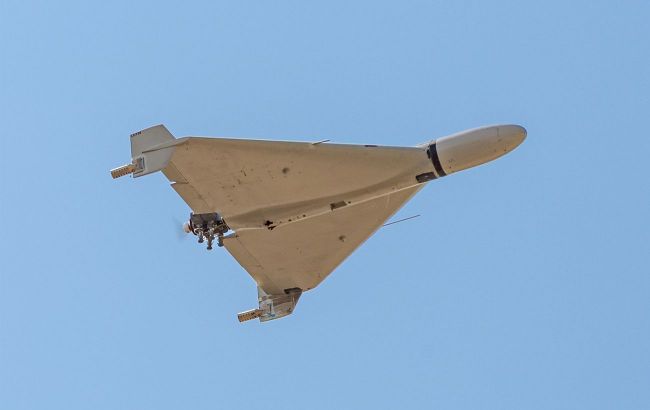Russia’s strike drones hit NATO: ISW explains strategy
 Russian-Iranian attack drone Shahed (Photo: Getty Images)
Russian-Iranian attack drone Shahed (Photo: Getty Images)
Russia is attempting to assess NATO’s capabilities and reactions to strike drones to apply the lessons learned in potential future conflicts against the alliance, according to a report by the US Institute for the Study of War (ISW).
The report notes that the Kremlin faces a significant budget deficit and may raise consumer taxes to offset the shortfall, rather than reducing funding for its military, effectively shifting the economic burden onto the Russian population as a sacrifice required to support Russia’s war in Ukraine.
Several sources within the Russian government told the Russian opposition outlet The Bell that the government is considering raising the value-added tax (VAT) from 20% to 22% in the near future due to the large federal budget deficit.
By raising VAT to 22%, the Russian government could generate an additional 1 trillion rubles per year (approximately $11.9 billion), or 0.5% of Russia’s GDP. This tax increase would effectively reduce disposable income for Russian citizens, as businesses pass most of the tax hike onto consumers by raising the prices of goods and services.
The ISW notes that on September 9, the Russian Ministry of Finance reported a federal budget deficit of 4.2 trillion rubles (about $50 billion) for January–August 2025, significantly exceeding the planned deficit of 3.8 trillion rubles (around $45 billion) for the entire year.
Russian President Vladimir Putin previously stated that the country’s military budget currently amounts to 6.3% of GDP, or 13.5 trillion rubles (approximately $160 billion), a large portion of which likely contributes to the federal budget deficit.
These 6.3% of GDP do not include Russia’s investments in the defense industrial base (DIB). In fact, at the end of July 2025, the Kremlin proposed a zero VAT rate for Russian manufacturers of small drones.
On the night of September 10, during a large-scale Russian attack on Ukraine, at least 21 Russian drones crossed the border and entered Polish airspace.
The air forces of NATO allied countries used aviation to shoot down the targets.
Some of the drones were aimed at a logistics hub in Rzeszów, which hosts the largest node for supplying weapons to Ukraine.
As a result of the attack, Polish forces recovered the remains of 16 Russian drones.
In response to the provocation, NATO launched Operation Eastern Sentry to strengthen the defense of Europe’s eastern flank.

